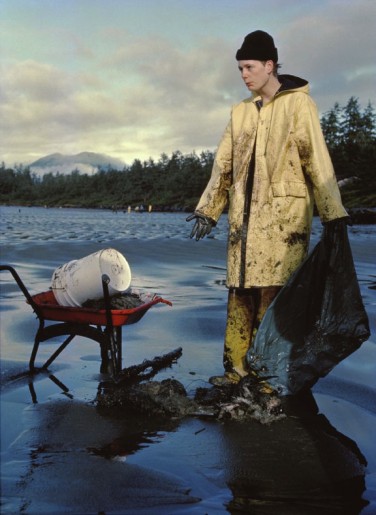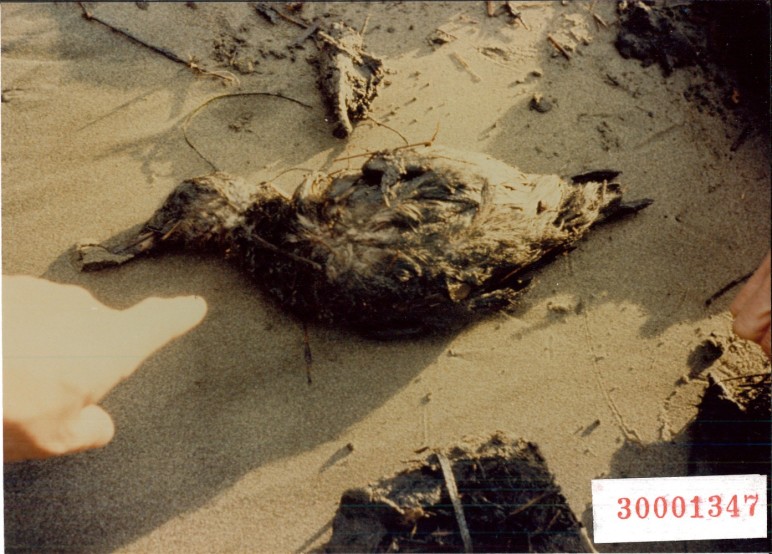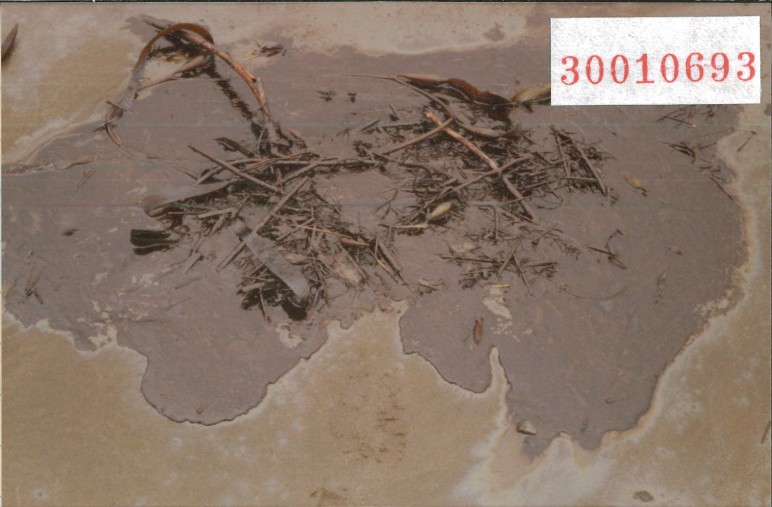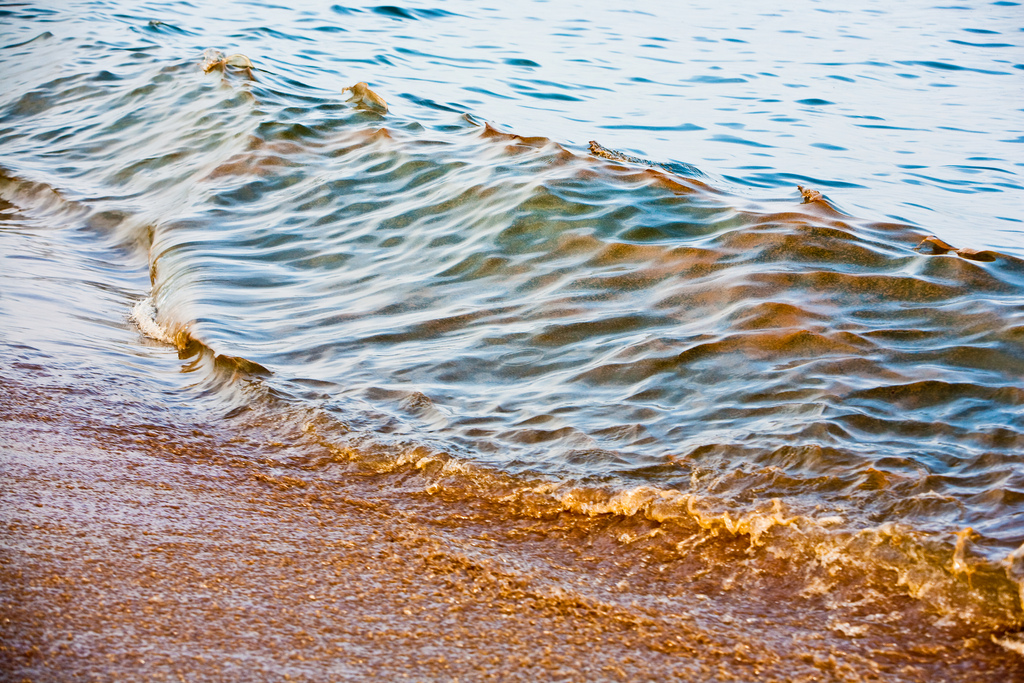The Nestucca #oilspill fouled 110 miles of #WA’s shoreline & 280 miles of Vancouver Island.
The 1988 Nestucca oil spill fouled 110 miles of Washington’s shoreline and 280 miles of the west coast of Vancouver Island. Yet because the spill happened just a few months before Exxon Valdez—an environmental disaster that released forty times more oil than Nestucca and remained the worst oil spill in American history until Deepwater Horizon in 2010—Grays Harbor’s smaller disaster was largely forgotten.
To understand what really happened and what the Nestucca can tell us about today’s debates over building oil terminals in Grays Harbor, Sightline researcher Tarika Powell visited the Washington State archives in Olympia to comb through boxes of original materials concerning the spill: state memorandums, notes, and attorney-client documents pertaining to the cleanup of the Nestucca oil spill. What she found in these twenty-five-year-old documents raises important questions for today’s debate about the wisdom of building new oil terminals at Grays Harbor.
Here’s what happened, in short: a tug operated by Sause Brothers of Coos Bay, Oregon, was towing a tanker barge of BP oil from Ferndale, Washington, to Portland when its tow wire broke. While trying to capture the runaway barge, the tug struck the Nestucca, ripping a six-foot-by-eighteen-inch gash in its hull and spilling 252,000 gallons of Bunker C oil. Knowing that the thick, Bunker C oil could persist for years in Grays Harbor, officials with the Coast Guard and the Washington Department of Ecology had the leaking barge towed out to sea. For a full day the Nestucca continued to leak about twenty miles off the mouth of the Columbia River, where winter winds and currents spread the oil north to British Columbia. Many Canadians felt that their shores had been sacrificed to save Grays Harbor.
Oiled waste disposal: A problem then and a problem now
No one made any effort to contain Nestucca’s spilled oil. The response was limited to cleaning beaches and birds. Officials considered containment and other oil recovery techniques ineffective because of winter sea conditions and the properties of the oil—it traveled under the surface of the water and was difficult to detect until it washed up along shorelines. Although experts believe that 78 percent of the spill dissipated at sea, an estimated 8 to 13 percent of the oil hit Northwest beaches. Cleanup operations took at least four months in the United States and at least six months in Canada, at very high cost to both governments.
The spill created international tensions. At one point, Canadian officials demanded that Sause Brothers pick up oiled debris from Canada and dispose of it in Washington. But where would they put 350 to 400 tons of oiled waste?
Documents from early February 1989 indicate that Washington officials and King County Council members discussed two landfills where both British Columbia and Washington’s oiled debris could possibly be disposed— the Le May landfill in Aberdeen, Washington, and the Cedar Hills Landfill twenty miles south of Seattle.
Although it is unclear where Washington’s waste actually wound up, the options were seriously flawed. The Le May landfill did not have a bottom liner, a barrier that would prevent the oil from seeping into the surrounding environment, but even this fact alone did not eliminate Le May from consideration.

King County Council and Washington Department of Ecology drafted an agreement to accept the oiled waste at Cedar Hills Landfill, but only if Ecology would classify it as solid waste instead of dangerous or hazardous waste, and only if the state provided King County with indemnification to be held harmless for any future repercussions of disposing of the oil spill waste. The Canadian Coast Guard’s “Nestucca Oil Spill Report” indicates that the Canadian portion of the waste was ultimately burned in an incinerator at Ladysmith on Vancouver Island.
The Department of Ecology authorized Sause Brothers to burn 100 tons of oiled logs that spill workers collected. Burning oiled materials can release particulate matter, which has adverse health impacts documented by Physicians for Social Responsibility, among others. The state’s authorization stipulated that the logs must be burned on lands not under federal or tribal jurisdiction and at least two miles from a residential community. While the authorization established conditions for burning, it did not establish a burn location or procedures for verifying that the workers actually followed the safety guidelines in the authorization. Sightline was unable to verify exactly where, how, or when the company burned the oiled logs.
If an oil spill happened at Grays Harbor today, the waste would most likely be sent to a landfill or incinerated—but where? Grays Harbor County’s landfills are “full and closed,” and waste from that area is instead disposed of at the Roosevelt Regional Landfill in Klickitat County. The Northwest Area Contingency Plan’s disposal guidance indicates that “most oily debris generated from oil spills has not historically been designated as dangerous waste in Washington State,” so the final destination of oil spill waste is a matter that may not be subject to much scrutiny. Companies that are responsible for oil spills can arrange for the waste to be buried at a landfill, recycled, or burned “without following the requirements of hazardous waste,” according to the Plan.
Grays Harbor County has a specified emergency system for nonhazardous wastes produced by disasters such as floods and earthquakes, but no specified plan for dealing with waste produced by an oil spill emergency. With oiled waste being routinely classified as nondangerous, nonhazardous solid waste, all that’s need is a contractor who has the capacity to accept it. It’s a troubling way of dealing with oil, which is a carcinogenic material that can affect the central nervous system.
Six-dollar birds
After the Nestucca spill, cleanup workers collected 13,000 oiled birds out of the estimated 52,000 to 78,000 that were impacted. Only 1,000 survived.
Publicly, Washington officials praised their bird rescue work as organized and effective, but interagency memos from the time indicate that from the day after the spill to several months later, there was confusion over “who had overall responsibility” for bird rescue and cleaning.
After the Nestucca spill, cleanup workers collected 13,000 oiled birds out of the estimated 52,000 to 78,000 that were impacted. Only 1,000 survived.
Rescue workers initially set up a “Dirty Bird Hospital” at Hoquiam Middle School during Christmas break, and then later moved it to Ocean Shores Convention Center after school started. Animal experts who worked at Ocean Shores felt that twice as many birds could have survived if there had been fewer delays and better organization. Sause hired an expert from the International Bird Rescue Center but owing to the sheer number of oiled birds and the length of affected shoreline, the effort was largely led by citizen volunteers. Some of the volunteers, believing that they had been used for free labor, later sued for compensation.
As hundreds of oiled birds waited to be cleaned, the oil degraded many birds’ feathers until survival in the wild was impossible. Even for many that were washed and released, the hard water at Ocean Shores left grit on their feathers that ruined their water-tight integrity, causing the birds to sink into the winter seas. It took workers about two weeks to identify the problem, and as the bird casualties mounted, the rescuers stored dead birds in large seafood freezers at the Ocean Shores Seafood Mini Mart.

Bird casualties helped motivate Washington’s subsequent legal battle with Sause Brothers. At the time of the spill, the US Interior Department had limited the damages a state could recover for wildlife to an animal’s market value. For example, seals were valued at $15, the market cost of a fur pelt. Companies that killed murrelets, plovers, oystercatchers and other sea birds faced little liability because the birds had low market value. Sause Brothers claimed that sea birds were so plentiful that neither bird watchers nor casual observers would be able to discern a difference in the bird population. They proposed a $36,750 settlement for the birds—a payment of $5.87 each for just 6,260 birds.
Today, Washington has the capacity to treat less than 1 percent of the number of birds recovered after the Nestucca spill. The state has three mobile rehabilitation units, and each unit has a capacity of up to thirty-five oiled birds. In other words, all three would need to be dispatched to a site in order to treat just 100 moderately oiled birds over a 30-day response period. It’s an egregious lack of preparation in a location that is home to some of the most important bird habitats in North America.
On the plus side, however, it’s now clear that the US Fish and Wildlife Service and Washington Department of Fish and Wildlife have overall responsibility for oiled birds. There are suggested guidelines for staffing oil spill response teams, minimum requirements for the facilities at which oiled wildlife are treated, and chain-of-custody protocols for disposing of dead birds.
Ecosystem Restoration

Washington estimated environmental damages from the Nestucca oil spill at $8.1 million to $36 million (roughly $15.5 million to $69 million in today’s dollars). Yet BP offered “$3 million for everything” during settlement negotiations, and demanded “credit” for the volunteer cleanup effort and for Sause Brothers’ cooperation with the clean-up efforts.
Numerous government representatives claimed in the press that Sause Brothers had “opened up their pocketbook” and were very cooperative. But documents in the Washington State Archives indicate otherwise.
Settlement talks between the state, Sause Brothers, and (more discreetly) BP went back and forth for almost two years. Sause called the state’s October 1989 settlement proposal for over $10 million “fundamentally flawed,” claiming that “none of the natural resources of the state of Washington have been substantially harmed.” Sause blamed the damage to the coast and to seabirds on the state preventing the tanker from entering Grays Harbor, arguing they could have patched it more quickly inside the Harbor.
BP preferred to settle quickly and quietly, but Sause Brothers wanted to limit its monetary damages to only $957,084—the value of their tug and the spilled oil. Eventually, Sause agreed to pay $3.35 million to settle state and federal claims—an initial payment of $1.35 million and 10 annual payments of $200,000. British Columbia pursued trial more vigorously than Washington and settled for $7.3 million.
Seven years after the spill, the US Fish and Wildlife Service established a Nestucca oil spill restoration plan. A revised restoration plan, published in 2004, sixteen years after the spill, indicated that the government had still not been able to complete the initial plan due to limited funding and responding to other oil spills.
When Sightline contacted Fish and Wildlife for an update, we were informed that the 2004 restoration plan had been completely carried out, but we were not able to confirm the dates of completion.
Despite changes in oil spill regulations and response procedures, the 25-year-old Nestucca oil spill remains a useful example of what might happen today if another oil spill hits Grays Harbor.
The Nestucca oil spill remains a useful example of what might happen today if another oil spill hits Grays Harbor.
A recent study by Resource Dimensions on the economic impacts of potential oil spills in Grays Harbor indicates that there’s still very limited oil spill response capacity in the region, and a significant spill would spread to the shoreline and the Grays Harbor estuary within a matter of hours. How long, though, would it take to clean up?
Grays Harbor decision makers are now weighing whether to permit three oil terminals that would dramatically increase both rail and marine oil transport. Yet it’s not clear that the region would be able to grapple with a spill any more effectively than it did with the Nestucca. The county still makes waste disposal decisions after the fact, with even fewer possible disposal locations at hand. The state still treats oiled waste as if it were non-oiled waste, potentially endangering people who live near the disposal or burn sites. Agencies still have limited resources for handling oiled wildlife. And the funds we have to respond to oil spills? Still woefully inadequate.
In addition to the sources linked in this article, we consulted the following materials:
- Beorse, Bryn. “Response to harbor oil spill far superior than Exxon, study says,” (Aberdeen) Daily World, 9 Sept. 1989.
- Canadian Coast Guard Western Region. Nestucca Oil Spill Report. June 1989.
- Cushman, John H., Jr. “Court deals costly blow to polluters,” Seattle Post-Intelligencer, 15 July 1989.
- Deschamps, Isabelle, et al. “What crises could teach us about complexity and systemic management: The case of the Nestucca oil spill.” Technological Forecasting and Social Change 55 (1997): 107-129.
- Flamini, Francesca, et. al. “Settlement versus Litigation in Environmental Damage Cases” (Working Paper, University of Glasgow, 2003), 17.
- Washington State Archives, Olympia, WA. Files of the Washington Department of Ecology, “Contaminated woody debris burning authorization and agreement,” 23 Jan. 1989.
- Washington State Archives, Olympia, WA. Files of the Washington Department of Ecology, “Draft Motion authorizing the King County Executive to enter into an agreement with the Department of Ecology to accept waste from British Columbia at the Cedar Hills Regional Landfill,” 2 Feb. 1989.
- Washington State Archives, Olympia, WA. Files of the Washington Department of Ecology, “Background for BCTV Questions on Oil Spill,” 22 Feb. 1989.
- Washington State Archives, Olympia, WA. Files of the Washington Department of Ecology, “Memorandum: Ocean Shores Bird Center,” 27 Feb. 1989.
- Washington State Archives, Olympia, WA. Files of the Washington Department of Ecology, “Memorandum: Spill Facts,” 1 Feb. 1989.
- Washington State Archives, Olympia, WA. Files of the Washington Department of Ecology. “Memorandum: Oil Spill Waste Disposal,” 3 Feb. 1989.
- Washington State Archives, Olympia, WA. Files of the Washington Department of Ecology, “Nestucca oil mass balance statement.”
- Washington State Archives, Olympia, WA. Files of the Washington Department of Ecology, Notes on meeting with Sause/BP, “Fight with Sause #3.”
- Washington State Archives, Olympia, WA. Letter from Dale Sause. “Re: Washington Coast Oil Spill,” 8 Nov. 1989.


Comments are closed.